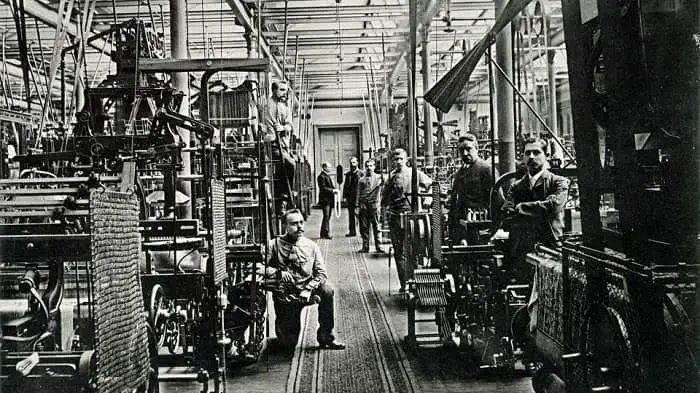In this article, we are going to explore the sociological and philosophical understanding of premodern, modern and postmodern and how they developed over the period. To start with, as Feldman describes, there are two consecutive substages of premodernism, which he respectively, calls cyclical and the eschatological (Feldman, 2000). The cyclical stage had a firm belief in the God (or the Gods) as an accepted source of knowledge and values (Feldman, 2000). The second stage of premodernism, the eschatological scene, came with the coming of the Christian era to western civilisation (Feldman, 2000). In this era, although universal and eternal principles existed, which were ordained by God, people believed in spiritual and carnal as two distinct entities leading to a more constrained understanding of the cosmos (Feldman, 2000). Further, in understanding the cosmos, it became associated more with the carnal than the spiritual, or to do with physical, i.e. the actual presence of God, than a normative understanding of God (Feldman, 2000). In this second phase of the premodern era the concept of human reason, too, became more limited and a person could grasp the universal and eternal truth only through religious faiths (Feldman, 2000).

Western society somewhat paradoxically underwent both secularisation and sacralization to such an extent that the secular realm of Calvin’s theological disjunction of the ‘sacred and the secular’ brought scientific revolution along with some of the socio-political revolutions of the seventeenth and eighteenth centuries (Feldman, 2000). The modernist ideology, although parallel to the second stage of premodernism differed from it in the following three ways (Feldman, 2000). First, their conception of progress was secular, unlike premodern which were sacred, eternal and universal believes (Feldman, 2000). Second, modernists believed in endless progress against the potential realisation of the ultimate principles of premodern (Feldman, 2000). Third, modernist progress was based on scientific rationality, considering human being at the centre, while premodernist progress arose through divine intervention and the presence of God (Feldman, 2000). Thus, the modernist took control of the physical world and the social organisation on themselves and in a way questioned the very existence of God (Feldman, 2000).

The transition from premodern to modern, progresses further, to understand the meaning of Modernity concerning high capitalism controlled by society or social organisations which are the products of industrialisation that flourished in an eighteenth and nineteenth century (Schulte-Sasse, 1986). The culture evolved out of these organisations or the precipitate of the socio-historical period can be termed as modernism (Schulte-Sasse, 1986). Further, modernism can be claimed as the product of high culture and mass culture if material production corresponds to the cultural reproduction and vice versa (Schulte-Sasse, 1986). In the late nineteenth century, modernist ego started deflating under the weight of cold war and even the nuclear threat for universal destruction (Wong, 1995). The age-old traditions of human civilisation suddenly started proving dangerous by the mere press of a button and scientific revolution itself was proving to be destructive than constructive (Wong, 1995). Although nuclear war did not suddenly destroy the world, environment pollution would be a slow poison (Wong, 1995). In short, modernism lost its popular support under human control, and the idea of endless progress crumbled (Wong, 1995).
Relation between Premodern, Modern and Postmodern
There were other social and cultural factors which resulted in a collapse of modernism and postmodernism emerged as a reaction to the horrific results of modernism in the late twentieth century (Wong, 1995). Postmodernity and postmodernism referred to qualitative changes in society and their cultural manifestations and rejected the central modernist convictions about foundational knowledge, individual autonomy and control, and endless social progress (Schulte-Sasse, 1986). In postmodernism, knowledge was more on the surface or superficial rather than deeply rooted epistemological understanding that modernism had, and it tried to study how forces operated on the surface (Wong, 1995).

The earlier philosophers of postmodernism like Jacques Derrida, Michel Foucault were initially recognised as post-structuralist, and the label postmodernists were given later to them on the basis of their philosophical, social, thematic understanding (Wong, 1995). Postmodern philosophies became profound when Bauman, Beck, Touraine and Giddens farewell to the industrial age, class struggle and what Giddens called ‘evolutionary narrative’ and marked as historical turn announced in philosophy (Zima, 2010). Authors such as Foucault, Lyotard and Deleuze along with criticising the conceptual patterns of modern thought, of Enlightenment rationalism, Hegelianism and Marxism, followed Benjamin, Adorno and Horkheimer by linking these patterns to the principle of domination (Zima, 2010). In this discussion, the subjectivity of postmodernism is individual freedom to many but understood by Foucault and Althusser as subjection or a way of subjugation of different ideologies. Postmodernism thus was different from modernism and rejected the universal, objective understanding of the world (Zima, 2010). Like sociologists who strongly rejected modernism and its proponents such as scientific, technological and technical progress, linking the latter to a universal crisis than a civilised way of living and progressive emancipation of humanity, the philosophers questioned the legitimacy of Christian, rationalist, Hegelian and Marxist metanarratives. (Zima, 2010).
However, if we do a critical analysis of these three periods, one finds synergy in the evolution of the human beings. Unlike Calvin’s theology of accepting rules, humans are rebellion to any systematic order. In premodern times it was rebellious to the system of belief in the God, in modern times to absolute truth and in the current postmodern phase, the plurality of postmodernism seems to stretch to such an extent that everyone seems to be getting isolated from each other. This study is essential to understand the pattern of human evolution and can anticipate struggle and movements in contemporary sociological and philosophical context.
References:
- Feldman, S. M. (2000). American legal thought from premodernism to postmodernism: an intellectual voyage. Retrieved from https://login.library.britishcouncil.org.in:4443/login?qurl=https://ebookcentral.proquest.com%2f
- Wong, D. (1995). Post- and Pre-Modern Ambiguities. Sojourn: Journal of Social Issues in Southeast Asia, 10(1), 140-144. Retrieved from https://login.library.britishcouncil.org.in:4443/login?qurl=http://www.jstor.org%2fstable%2f41056907
- Schulte-Sasse, J. (1986). Introduction: Modernity and Modernism, Postmodernity and Postmodernism: Framing the Issue. Cultural Critique, (5), 5-22. doi:10.2307/1354354
- Zima, P. V. (2010). Modern/postmodern: society, philosophy, literature. Retrieved from https://login.library.britishcouncil.org.in:4443/login?qurl=https://ebookcentral.proquest.com%2f